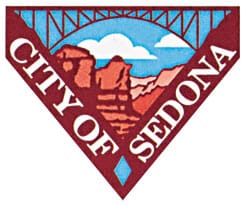How to keep the small-school feeling and deal with cell phones, modern dress styles and communication with the communities and each other were among the topics on the agenda at a Sedona-Oak Creek School District leadership meeting Thursday, June 21.
Larson Newspapers
________________
How to keep the small-school feeling and deal with cell phones, modern dress styles and communication with the communities and each other were among the topics on the agenda at a Sedona-Oak Creek School District leadership meeting Thursday, June 21.
SOCSD Superintendent Kim Randall included goals in gifted education and fine arts, areas she wants to get particular attention next year.
The Sedona-Oak Creek School District’s Governing Board and key administrative staff held an informal goal-setting strategy session intended to focus on issues of physical and social well-being, academic areas and board goals for the unified district’s more than 1,400 students.
For Bobbie Surber, board president, the issue is how to keep the small-school feeling.
Lisa Hirsch, who serves a dual role as director of teaching and learning and associate principal of the Sedona Red Rock High School, responded to Surber’s idea and said, “Our goal is that students feel like they are in their second home.”
“Keeping the small-school atmosphere basically means the kids don’t feel like they are a number,” she said.
Hirsch cited the professionalism of the staff and its ability to include a wide variety of
students in activities as a means of keeping the small school feeling.
Both Hirsch and Dave Lykins, SRRHS principal, concurred that, “very few students are not involved in something.”
Lykins repeated, “We know our students” as an antidote
to big-school problems and dangers.
Board Vice President Karen McClelland said, “Half the school seems to be doing
something after school.”
Lykins noted that involvement in activities is a factor in student safety and social well-being.
Randall noted an offer from an anonymous community source that would help fund a kindergarten through 12th-grade fine arts, performing arts and music program if the right person can be found to head the program.
She referred to discussions she has held with the dean of the Boston Conservatory on this matter.
Currently, the music offerings of the district are jazz band, jazz choir, drumline and steel drum ensemble.
Randall also wants to expand language offerings at the high school and see more foreign language introduced in the lower grades.
She would also like to see the district explore a dual language program.
“Basically, it is a European model,” she said. “This has strong community support.”
“It all hinges on finding the right people — someone fluent in reading, writing and speaking both languages,” Randall said.
On more nuts-and-bolts issues, some of the administrative team decided that the school’s cell phone policy is working for now.
Director of Special Programs Susan Terry-Gage asked to have a review of cell phone policies. She said she knew of students who were text messaging, holding the phone under their desks while talking to a teacher.
The current policy at the high school allows that any student caught with a phone will have it taken away and returned at the end of the day.
After the second offense, the student’s parents are called to pick up the phone.
The third offense sees that student banned from having a cell phone on campus.
At Big Park Community School, the punishment for the first cell phone offense is detention; the second offense, the phone is taken away and returned at the end of the day.
On the third offense, the phone is taken away and returned to parents only.
Lykins mentioned the possible use of a scrambler like is used at gambling casinos to prevent cheating.
The issues of cell phones, dress codes and bullying regulations will be taken up by the individual school site councils in the fall.
Problems in using the “chain of command” were addressed by Randall and Surber.
Surber acknowledged the reasons for going through channels and that it is easier to control when it comes to staff members but “when a community member approaches a board member with an issue, they deserve the respect of a response.”
Randall said the chain of command is not to stifle communication but to ensure everybody is included in the loop.
“When a board member gets some information, the question is how to get it to the right person to get accurate information to respond,” she said.
Only two of the district’s five board members were in attendance.
Two were out of town and one was unavoidably delayed, Randall said.
Randall spoke about the rapid rise of autistic students seeking school services.
Gage said the district is seeing large jumps in the number of autistic students that reflected the demand nationwide.
English language learner services are also in flux and frustrating, he said.
Gage said the ELL enrollment is climbing at WSS and BPCS campuses.
She suggested the creation of a bilingual charter school within the district as a possible way of handling these student’s needs.




















